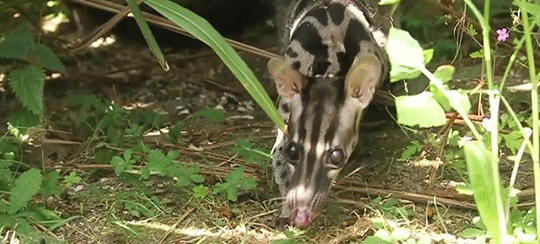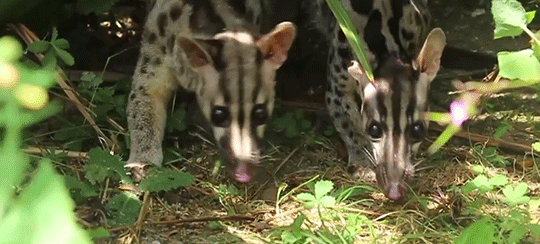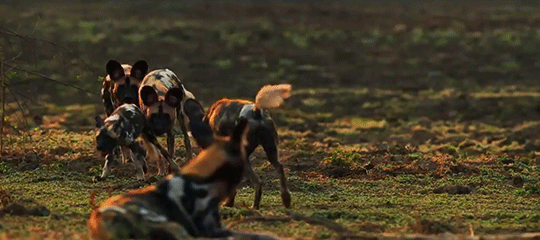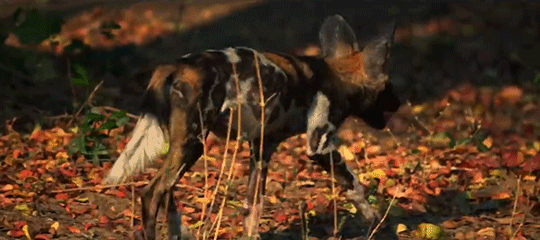#Carnivora
Explore tagged Tumblr posts
Text

A sable (Martes zibellina) in Krasnoyarsk Territory, Russia
by Dmitry Boldyrev
#sable#martens#mustelids#martes zibellina#martes#mustelidae#carnivora#mammalia#chordata#wildlife: russia#wildlife: asia
49 notes
·
View notes
Text





Very little is known about the Owsten's palm civet and its behaviors. The information we have comes from the observations of local trappers and scientific study of the civet's scat and teeth. Although it's listed as endangered conservationists are working to increase populations by protecting wild civets, eliminating illegal civet hunting and trade, and conservation breeding. ©Port Lympne
5K notes
·
View notes
Text
Uncharismatic Fact of the Day
Many animals have unusual hunting methods, but the marsh mongoose's might be one of the strangest. To catch birds, adults will sometimes lie on their back as if sunbathing. This exposes their bright pink anus, and curious birds are drawn to peck at it. The mongoose then explodes into action, pouncing on the bird.

(Image: A marsh mongoose (Atilax paludinosus) by Colin Ralston)
1K notes
·
View notes
Text
Spectember 2024 #05: Most Weasel
@gaycoonie suggested a "future legless mustelid":

Descended from an arboreal offshoot lineage of the modern least weasel, Maximagale gaycooniei is a bizarre mustelid that appears to have converged on the lifestyle of ambush-hunting tree snakes, evolving in northern latitudes where actual snakes are largely absent.
Growing to about 1m long (3'3"), it's not truly legless but its limbs are all reduced down to tiny vestigial single-clawed spurs, which are used to help anchor its body while climbing and as claspers during mating. It moves around with a distinctive inchworm-like looping gait, alternating grasping and releasing with its front and hind spurs.
Its build is bottom-heavy, with most of its mass concentrated in its thicker back end, and its tail is semi-prehensile. It clings to trees with its body bunched up, camouflaged with cryptic coloration, and rapidly whips its long flexible front half out to snap its powerfully-muscled jaws at prey – such as insects, birds, lizards, frogs, small mammals, and pretty much anything else that comes within its reach.
It will also opportunistically raid the nest of birds and arboreal mammals.
Due to the less frequent meals its ambush-hunting tactics provide, it has a much slower metabolism than its ancestors, and it conserves energy with daily periods of torpor and longer hibernation during the colder months of winter. It has also retained its ancestor's tendency to seasonally shrink its brain size to reduce energy requirements even more.
#spectember#spectember 2024#speculative evolution#weasel#mustelid#carnivora#mammal#art#science illustration#i wasn't *intentionally* referencing after man's chirit here but ¯\_(ツ)_/¯
641 notes
·
View notes
Text

European Pine Marten
751 notes
·
View notes
Text


#central american wildlife#south american wildlife#jaguarundi#mammalia#mammal#mammals#carnivora#feliforma#felidae#felinae#animal polls#poll blog#my polls#animals#polls#tumblr polls
183 notes
·
View notes
Text

Binturong
“A young bear cat kept as a pet by Orang Asli in Taman Negara (Malaysia)” - via Wikimedia Commons
#binturong#Arctictis binturong#bearcat#wikipedia#wikipedia pictures#wikimedia commons#nature#animals#cute animals#eukaryotes#chordates#mammals#carnivores#carnivora#feliformia#feliform#viverridae#Paradoxurinae#fauna#southeast asia#malaysia#asia#animal kingdom#zoology#Orang Asli#vulnerable species#threatened species#Arctictis#sleeping animals#Taman Negara
79 notes
·
View notes
Text

Did a commission for my Mum of her brother's cat. My first time properly drawing a cat.
#cat#domestic cat#cats#cats of tumblr#pet#pets#felis catus#felinae#felidae#feliformia#carnivora#mammals#mammal#animal#animals#art#digital art#artists on tumblr#tw eyestrain#cw eyestrain
32 notes
·
View notes
Text


North American River Otter (Lontra canadensis) - (c) SaritaWolf - please do not repost
33 notes
·
View notes
Text

Fossa Cryptoprocta ferox
5/28/2023 San Diego Zoo, California
#I was (and still am) SO happy that I got this shot..... the shape of this creature is so good.....#want to draw this someday#fossa#fossas#mammal#madagascar#carnivore#carnivora#feliformia#captive animal#san diego zoo#san diego zoo safari park#zoo animals#zoo#zoo photography#bird#birds#photography#photographers on tumblr#original photography#nature photography#my photos
52 notes
·
View notes
Text





American mink (Neogale vison)
Moscow, December 2024 / Photographer: Pavel Nyrikov
#nature#landscape#american mink#wildlife#best photographers#animals#mink#mustelids#neogale vison#neogale#mustelidae#carnivora#mammalia#chordata
38 notes
·
View notes
Text

A sable (Martes zibellina) in the snow in Krasnoyarsk Territory, Russia
by Nadia Stolby
#sable#martens#mustelids#martes zibellina#martes#mustelidae#carnivora#mammalia#chordata#wildlife: russia#wildlife: asia
52 notes
·
View notes
Text






African wild dogs, or painted wolves, are the bulkiest of the African canids. Their fur is also unique in that they have no undercoat, and gradually shed their fur as they age, until adults are almost completely bare. ©Love Nature
#painted wolf#african wild dog#africa#zambia#South Luangwa National Park#savannah#scrubland#mammalia#carnivora#request
3K notes
·
View notes
Text
Uncharismatic Fact of the Day
Bush dogs are living proof that team work makes the dream work! When these small canines hunt half of the pack will pursue their prey over land, while the other half waits in water for the target to try to swim away. Bush dogs are particularly adapted to this style of hunting, as their partially webbed feet make them excellent swimmers.

(Image: A bush dog (Speothos venaticus) by Josh More)
482 notes
·
View notes
Text
Spectember/Spectober 2024 #09: Big Bad Wild Dogs
@poshtearexdoodles asked for "African wild dogs evolved to fill the larger pack animal niche of lions":
Although in this particular timeline the endangered and fragmented wild painted dogs in Africa didn't survive far past modern times, that wasn't the final extinction of the species – captive groups persisted, and after the [REDACTED] of humans an escaped population managed to carve out a niche for themselves in the grasslands of southern North America.

Their most notable descendant is Megainolycos poshtearexi. At nearly 1m tall at the shoulder (~3'3") it's one of the largest canids to ever exist, comparable to present-day lions in size and general ecology, with short thick bone-crushing jaws convergent with those of hyenas.
It also retains the complex variable coat coloration of its ancestors, with each individual having a unique disruptive pattern of black, white, and brown blotches.
Much like its ancestors it's a highly social pack predator specialized for endurance hunting. Along with some surprisingly horse-like limb ligament morphology, its feet now sport hoof-like nails rather than claws, and it pursues prey over long distances to the point of exhaustion – mainly targeting the larger ungulates across its prairie habitat such as hogs, horses, bovids, and deer.
#spectember#spectober#spectember 2024#speculative evolution#canidae#carnivora#mammal#art#science illustration#wolves on hooves 2: electric boogaloo
212 notes
·
View notes
Photo

Black Bear
2K notes
·
View notes